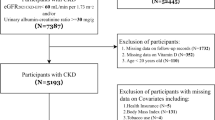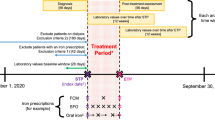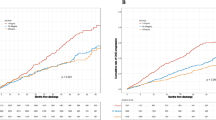Abstract
To date, all major clinical trials for anemia correction using erythrocyte stimulating agents (ESAs) failed to show improved outcomes for cardiovascular disease (CVD), stroke, and vascular thrombosis. Even moderate elevations in hemoglobin (e.g., to 13 g/dL) using erythropoietin have been associated with significantly increased risk of thrombotic cardiovascular events and heart failure. This review presents a biophysical rationale for increased risk of CVD among certain patients treated with ESAs and suggests a risk management approach based on blood viscosity. Whole blood viscosity is a key determinant of the work of the heart, and elevated blood viscosity appears to be both a strong predictor of cardiovascular disease and an important pathophysiological factor in the development of atherothrombosis. Blood donation has been shown to reduce viscosity. Reflecting these findings, studies in male blood donors and in women of premenopausal age with regular menstruation have shown reduced incidence of cardiovascular events such as myocardial infarction, angina, stroke, and the requirement for procedures such as percutaneous transluminal coronary angioplasty and coronary artery bypass graft compared with non-donors and postmenopausal women, respectively. We propose that blood viscosity monitoring should be considered as part of a cardiovascular risk assessment, whenever an increased cardiovascular risk is detected and particularly in the context of anemia correction.



Similar content being viewed by others
References
Scholl TO, Hediger ML. Anemia and iron-deficiency anemia: compilation of data on pregnancy outcome. Am J Clin Nutr. 1994;59:492S–500S, discussion S–1S.
Weiss G, Goodnough LT. Anemia of chronic disease. N Engl J Med. 2005;352:1011–23.
Stenvinkel P. The role of inflammation in the anaemia of end-stage renal disease. Nephrol Dial Transplant. 2001;16:36–40.
USRD System. USRD 2008 Annual Data Report: Atlas of End-Stage Renal Disease in the United States, National Institutes of Health, National Institute of Diabetes and Diagestive and Kidney Diseases. Bethesda, MD, 2008.
Worldwide prevalence of anemia 1993–2005: WHO global database on anemia. In: de Benoist et al., editors. Geneva, Switzerland; 2008.
Kjeldsen SE, Dahlof B, Devereux RB, et al. Lowering of blood pressure and predictors of response in patients with left ventricular hypertrophy: the LIFE study. Losartan Intervention For Endpoint. Am J Hypertens. 2000;13:899–906.
Silberberg JS, Rahal DP, Patton DR, Sniderman AD. Role of anemia in the pathogenesis of left ventricular hypertrophy in end-stage renal disease. Am J Cardiol. 1989;64:222–4.
Levin A, Thompson CR, Ethier J, et al. Left ventricular mass index increase in early renal disease: impact of decline in hemoglobin. Am J Kidney Dis. 1999;34:125–34.
Bansal N, Tighiouart F, Weiner D, et al. Anemia as a risk factor for kidney function decline in individuals with heart failure. Am J Cardiol. 2007;99:1137–42.
Palazzuoli A, Gallotta M, Iovine F, Nuti R, Silverberg DS. Anaemia in heart failure: a common interaction with renal insufficiency called the cardio-renal anaemia syndrome. Int J Clin Pract. 2008;62:281–6.
Foley RN, Parfrey PS, Harnett JD, Kent GM, Murray DC, Barre PE. The impact of anemia on cardiomyopathy, morbidity, and and mortality in end-stage renal disease. Am J Kidney Dis. 1996;28:53–61.
Ma JZ, Ebben J, Xia H, Collins AJ. Hematocrit level and associated mortality in hemodialysis patients. J Am Soc Nephrol. 1999;10:610–9.
Pfeffer MA, Burdmann EA, Chen CY, et al. Baseline characteristics in the Trial to Reduce Cardiovascular Events With Aranesp Therapy (TREAT). Am J Kidney Dis. 2009;54:59–69.
Drueke TB, Locatelli F, Clyne N, et al. Normalization of hemoglobin level in patients with chronic kidney disease and anemia. N Engl J Med. 2006;355:2071–84.
Singh AK, Szczech L, Tang KL, et al. Correction of anemia with epoetin alfa in chronic kidney disease. N Engl J Med. 2006;355:2085–98.
Besarab A, Bolton WK, Browne JK, et al. The effects of normal as compared with low hematocrit values in patients with cardiac disease who are receiving hemodialysis and epoetin. N Engl J Med. 1998;339:584–90.
Parfrey PS, Lauve M, Latremouille-Viau D, Lefebvre P. Erythropoietin therapy and left ventricular mass index in CKD and ESRD patients: a meta-analysis. Clin J Am Soc Nephrol. 2009;4:755–62.
Pfeffer MA, Burdmann EA, Chen C-Y, et al. A trial of darbepoetin alfa in type 2 diabetes and chronic kidney disease. N Engl J Med. 2009:NEJMoa0907845.
Unger EF, Thompson AM, Blank MJ, Temple R. Erythropoiesis-stimulating agents—time for a reevaluation. N Engl J Med. 2010;362:189–92.
Danesh J, Collins R, Peto R, Lowe GD. Haematocrit, viscosity, erythrocyte sedimentation rate: meta-analyses of prospective studies of coronary heart disease. Eur Heart J. 2000;21:515–20.
Ciuffetti G, Schillaci G, Lombardini R, Pirro M, Vaudo G, Mannarino E. Prognostic impact of low-shear whole blood viscosity in hypertensive men. Eur J Clin Investig. 2005;35:93–8.
Levy BI, Schiffrin EL, Mourad J-J, et al. Impaired tissue perfusion: a pathology common to hypertension, obesity, and diabetes mellitus. Circulation 2008;118:968–76.
Kwaan HC, Bongu A. The hyperviscosity syndromes. Semin Thromb Hemost. 1999;25:199–208.
Jax TW, Peters AJ, Plehn G, Schoebel FC. Hemostatic risk factors in patients with coronary artery disease and type 2 diabetes—a two year follow-up of 243 patients. Cardiovasc Diabetol. 2009;8:48.
Cho YI, Mooney MP, Cho DJ. Hemorheological disorders in diabetes mellitus. J Diabetes Sci Technol. 2008;2:1130–8.
Cecchi E, Marcucci R, Poli D, et al. Hyperviscosity as a possible risk factor for cerebral ischemic complications in atrial fibrillation patients. Am J Cardiol. 2006;97:1745–8.
Devereux RB, Case DB, Alderman MH, Pickering TG, Chien S, Laragh JH. Possible role of increased blood viscosity in the hemodynamics of systemic hypertension. Am J Cardiol. 2000;85:1265–8.
Kameneva MV, Watach MJ, Borovetz HS. Gender difference in rheologic properties of blood and risk of cardiovascular diseases. Clin Hemorheol Microcirc. 1999;21:357–63.
Sloop GD, Garber DW. The effects of low-density lipoprotein and high-density lipoprotein on blood viscosity correlate with their association with risk of atherosclerosis in humans. Clin Sci. 1997;92:473–9.
Rosenson RS, McCormick A, Uretz EF. Distribution of blood viscosity values and biochemical correlates in healthy adults. Clin Chem. 1996;42:1189–95.
Fowkes FG, Lowe GD, Rumley A, Lennie SE, Smith FB, Donnan PT. The relationship between blood viscosity and blood pressure in a random sample of the population aged 55 to 74 years. Eur Heart J. 1993;14:597–601.
Smith WC, Lowe GD, Lee AJ, Tunstall-Pedoe H. Rheological determinants of blood pressure in a Scottish adult population. J Hypertens. 1992;10:467–72.
de Simone G, Devereux RB, Chien S, Alderman MH, Atlas SA, Laragh JH. Relation of blood viscosity to demographic and physiologic variables and to cardiovascular risk factors in apparently normal adults. Circulation 1990;81:107–17.
Ernst E, Koenig W, Matrai A, Filipiak B, Stieber J. Blood rheology in healthy cigarette smokers. Results from the MONICA project, Augsburg. Arteriosclerosis 1988;8:385–8.
Levenson J, Simon AC, Cambien FA, Beretti C. Cigarette smoking and hypertension. Factors independently associated with blood hyperviscosity and arterial rigidity. Arteriosclerosis 1987;7:572–7.
Ernst E, Weihmayr T, Schmid M, Baumann M, Matrai A. Cardiovascular risk factors and hemorheology. Physical fitness, stress and obesity. Atherosclerosis 1986;59:263–9.
Letcher RL, Chien S, Pickering TG, Sealey JE, Laragh JH. Direct relationship between blood pressure and blood viscosity in normal and hypertensive subjects. Role of fibrinogen and concentration. Am J Med. 1981;70:1195–202.
Tamariz LJ, Young JH, Pankow JS, et al. Blood viscosity and hematocrit as risk factors for type 2 diabetes mellitus: The Atherosclerosis Risk in Communities (ARIC) Study. Am J Epidemiol. 2008;168:1153–60.
Frangos SG, Gahtan V, Sumpio B. Localization of atherosclerosis: role of hemodynamics. Arch Surg. 1999;134:1142–9.
Malek AM, Alper SL, Izumo S. Hemodynamic shear stress and its role in atherosclerosis. JAMA 1999;282:2035–42.
Lee AJ, Mowbray PI, Lowe GD, Rumley A, Fowkes FG, Allan PL. Blood viscosity and elevated carotid intima-media thickness in men and women: the Edinburgh Artery Study. Circulation 1998;97:1467–73.
Cho YI, Kensey KR. Effects of the non-Newtonian viscosity of blood on flows in a diseased arterial vessel. Part 1: Steady flows. Biorheology 1991;28:241–62.
Fukuda S, Yasu T, Kobayashi N, Ikeda N, Schmid-Schonbein GW. Contribution of fluid shear response in leukocytes to hemodynamic resistance in the spontaneously hypertensive rat. Circ Res. 2004;95:100–8.
Brun JF, Bouchahda C, Chaze D, Benhaddad AA, Micallef JP, Mercier J. The paradox of hematocrit in exercise physiology: which is the “normal” range from an hemorheologist’s viewpoint? Clin Hemorheol Microcirc. 2000;22:287–303.
Fung YC. Biomechanics: mechanical properties of living tissues. New York: Springer-Verlag; 1981. p. 108–13.
Gaehtgens P, Pries AR, Ley K. Structural hemodynamic and rheological characteristics of blood flow in the circulation. In: Chien S, Dormandy J, Ernst E, Matrai A, editors. Clinical hemorheology: applications in cardiovascular and haematological disease, diabetes, surgery, and gynecology. Boston: Martinus Niihoff; 1987. p. 97–124.
Leonhardt H, Arntz HR, Klemens UH. Studies of plasma viscosity in primary hyperlipoproteinaemia. Atherosclerosis 1977;28:29–40.
Seplowitz AH, Chien S, Smith FR. Effects of lipoproteins on plasma viscosity. Atherosclerosis 1981;38:89–95.
Rosenson RS, Baker AL, Chow MJ, Hay RV. Hyperviscosity syndrome in a hypercholesterolemic patient with primary biliary cirrhosis. Gastroenterology 1990;98:1351–7.
Dormandy JA. Medical and engineering problems of blood viscosity. Biomed Eng. 1974;9:284–9.
Lowe GD. Blood rheology in arterial disease. Clin Sci (Lond). 1986;71:137–46.
Rosenson RS, Shott S, Tangney CC. Hypertriglyceridemia is associated with an elevated blood viscosity Rosenson: triglycerides and blood viscosity. Atherosclerosis 2002;161:433–9.
Stamos TD, Rosenson RS. Low high density lipoprotein levels are associated with an elevated blood viscosity. Atherosclerosis 1999;146:161–5.
Hoieggen A, Fossum E, Moan A, Enger E, Kjeldsen SE. Whole-blood viscosity and the insulin-resistance syndrome. J Hypertens. 1998;16:203–10.
Lowe GD. Blood viscosity, lipoproteins, and cardiovascular risk. Circulation 1992;85:2329–31.
Otto C, Richter WO, Schwandt P. Contribution of fibrinogen and lipoproteins to plasma viscosity in hypercholesterolemia and hypertriglyceridemia: evaluation by selective depletion of low-density lipoproteins or fibrinogen. Metabolism 2000;49:810–3.
Lowe GD, Fowkes FG, Dawes J, Donnan PT, Lennie SE, Housley E. Blood viscosity, fibrinogen, and activation of coagulation and leukocytes in peripheral arterial disease and the normal population in the Edinburgh Artery Study. Circulation 1993;87:1915–20.
Koenig W, Sund M, Filipiak B, Doring A, Lowel H, Ernst E. Plasma viscosity and the risk of coronary heart disease: results from the MONICA-Augsburg Cohort Study, 1984 to 1992. Arterioscler Thromb Vasc Biol. 1998;18:768–72.
Lowe GD, Lee AJ, Rumley A, Price JF, Fowkes FG. Blood viscosity and risk of cardiovascular events: the Edinburgh Artery Study. Br J Haematol. 1997;96:168–73.
Cunningham KS, Gotlieb AI. The role of shear stress in the pathogenesis of atherosclerosis. Lab Invest. 2005;85:9–23.
Kensey KR. Rheology: an overlooked component of vascular disease. Clin Appl Thromb Hemost. 2003;9:93–9.
Friedman MH, Bargeron CB, Deters OJ, Hutchins GM, Mark FF. Correlation between wall shear and intimal thickness at a coronary artery branch. Atherosclerosis 1987;68:27–33.
Caro CG, Fitz-Gerald JM, Schroter RC. Arterial wall shear and distribution of early atheroma in man. Nature 1969;223:1159–60.
Libby P, Ridker PM, Maseri A. Inflammation and atherosclerosis. Circulation 2002;105:1135–43.
Tuomainen TP, Salonen R, Nyyssonen K, Salonen JT. Cohort study of relation between donating blood and risk of myocardial infarction in 2682 men in eastern Finland. BMJ 1997;314:793–4.
Hemila H, Paunio M. Blood donation, body iron stores, and risk of myocardial infarction. Confidence intervals and possible selection bias call study results into question. BMJ 1997;314:1830–1.
Salonen JT, Tuomainen TP, Salonen R, Lakka TA, Nyyssonen K. Donation of blood is associated with reduced risk of myocardial infarction. The Kuopio Ischaemic Heart Disease Risk Factor Study. Am J Epidemiol. 1998;148:445–51.
Sloop GD. Possible association of a reduction in cardiovascular events with blood donation. Heart. 1998;79:422.
Cliville X, Bofill C, Joven J, et al. Hemorheological, coagulative and fibrinolytic changes during autologous blood donation. Clin Hemorheol Microcirc. 1998;18:265–72.
Janetzko K, Kluter H, Kirchner H, Klotz KF. The effect of moderate hypovolaemia on microcirculation in healthy older blood donors. Anaesthesia 2001;56:103–7.
Gordon T, Kannel WB, Hjortland MC, McNamara PM. Menopause and coronary heart disease. The Framingham Study. Ann Intern Med. 1978;89:157–61.
Meyers DG, Strickland D, Maloley PA, Seburg JK, Wilson JE, McManus BF. Possible association of a reduction in cardiovascular events with blood donation. Heart 1997;78:188–93.
Zacharski LR, Chow BK, Howes PS, et al. Reduction of iron stores and cardiovascular outcomes in patients with peripheral arterial disease: a randomized controlled trial. JAMA 2007;297:603–10.
Sullivan JL. Iron and the sex difference in heart disease risk. Lancet 1981;1:1293–4.
Humphrey PR, Michael J, Pearson TC. Management of relative polycythaemia: studies of cerebral blood flow and viscosity. Br J Haematol. 1980;46:427–33.
Humphrey PR, Du Boulay GH, Marshall J, et al. Cerebral blood-flow and viscosity in relative polycythaemia. Lancet 1979;2:873–7.
Gilbert HS. Modern treatment strategies in polycythemia vera. Semin Hematol. 2003;40:26–9.
Vautier G, Murray M, Olynyk JK. Hereditary haemochromatosis: detection and management. Med J Aust. 2001;175:418–21.
Tefferi A. A contemporary approach to the diagnosis and management of polycythemia vera. Curr Hematol Rep. 2003;2:237–41.
Laudicina RJ, Legrys VA. Hereditary hemochromatosis: a case study and review. Clin Lab Sci. 2001;14:196–208, quiz 20-2.
Eschbach JW, Abdulhadi MH, Browne JK, et al. Recombinant human erythropoietin in anemic patients with end-stage renal disease. Results of a phase III multicenter clinical trial. Ann Intern Med. 1989;111:992–1000.
Besarab A, Goodkin DA, Nissenson AR. The normal hematocrit study-follow-up. N Engl J Med. 2008;358:433–4.
Ehrenreich H, Weissenborn K, Prange H, et al. Recombinant human erythropoietin in the treatment of acute ischemic stroke. Stroke 2009;40:e647–56.
Frietsch T, Maurer MH, Vogel J, Gassmann M, Kuschinsky W, Waschke KF. Reduced cerebral blood flow but elevated cerebral glucose metabolic rate in erythropoietin overexpressing transgenic mice with excessive erythrocytosis. J Cereb Blood Flow Metab. 2007;27:469–76.
Szapary L, Horvath B, Marton Z, et al. Hemorheological disturbances in patients with chronic cerebrovascular diseases. Clin Hemorheol Microcirc. 2004;31:1–9.
Velcheva I, Antonova N, Titianova E, Damianov P, Dimitrov N, Dimitrova V. Hemorheological disturbances in cerebrovascular diseases. Clin Hemorheol Microcirc. 2008;39:391–6.
Coull BM, Beamer N, de Garmo P, et al. Chronic blood hyperviscosity in subjects with acute stroke, transient ischemic attack, and risk factors for stroke. Stroke 1991;22:162–8.
Shand BI, Buttimore AL, Lynn KL, Bailey RR, Robson RA. Effect of hemodialysis and recombinant human erythropoietin on determinants of blood viscosity. Ren Fail. 1994;16:407–13.
Lim MH, Cho YI, Jeong SK. Homocysteine and pulsatility index of cerebral arteries. Stroke 2009;40:3216–20.
Phrommintikul A, Haas SJ, Elsik M, Krum H. Mortality and target haemoglobin concentrations in anaemic patients with chronic kidney disease treated with erythropoietin: a meta-analysis. Lancet 2007;369:381–8.
Vaisman S, Kensey K, Cho YI. Effect of hemodialysis on whole blood viscosity. Int J Artif Organs. 2009;32:329–35.
Kim S, Cho YI, Hogenauer WN, Kensey KR. A method of isolating surface tension and yield stress effects in a U-shaped scanning capillary-tube viscometer using a Casson model. J Non-Newtonian Fluid Mech. 2002;103:205–19.
Wang S, Boss AH, Kensey KR, Rosenson RS. Variations of whole blood viscosity using Rheolog-a new scanning capillary viscometer. Clin Chim Acta. 2003;332:79–82.
Carroll S, Cooke CB, Butterly RJ. Plasma viscosity, fibrinogen and the metabolic syndrome: effect of obesity and cardiorespiratory fitness. Blood Coagul Fibrinolysis. 2000;11:71–8.
Ernst E. Haemorheological consequences of chronic cigarette smoking. J Cardiovasc Risk. 1995;2:435–9.
Lowe GD, Drummond MM, Forbes CD, Barbenel JC. The effects of age and cigarette-smoking on blood and plasma viscosity in men. Scott Med J. 1980;25:13–7.
Fowkes FG, Pell JP, Donnan PT, et al. Sex differences in susceptibility to etiologic factors for peripheral atherosclerosis. Importance of plasma fibrinogen and blood viscosity. Arterioscler Thromb. 1994;14:862–8.
Coppola L, Caserta F, De Lucia D, et al. Blood viscosity and aging. Arch Gerontol Geriatr. 2000;31:35–42.
Feriani M, Kimmel PL, Kurantsin-Mills J, Bosch JP. Effect of renal replacement therapy on viscosity in end-stage renal disease patients. Am J Kidney Dis. 1992;19:131–9.
McGregor D, Shand B, Lynn K. A controlled trial of the effect of folate supplements on homocysteine, lipids and hemorheology in end-stage renal disease. Nephron 2000;85:215–20.
Vonesh EF, Snyder JJ, Foley RN, Collins AJ. Mortality studies comparing peritoneal dialysis and hemodialysis: what do they tell us? Kidney Int Suppl. 2006;103:S3–11, Nov.
Author information
Authors and Affiliations
Corresponding author
Rights and permissions
About this article
Cite this article
Jeong, SK., Cho, Y.I., Duey, M. et al. Cardiovascular Risks of Anemia Correction with Erythrocyte Stimulating Agents: Should Blood Viscosity Be Monitored for Risk Assessment?. Cardiovasc Drugs Ther 24, 151–160 (2010). https://doi.org/10.1007/s10557-010-6239-7
Published:
Issue Date:
DOI: https://doi.org/10.1007/s10557-010-6239-7




